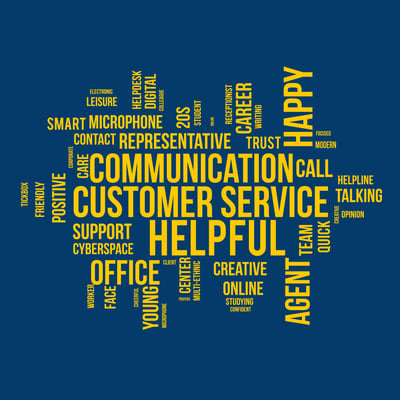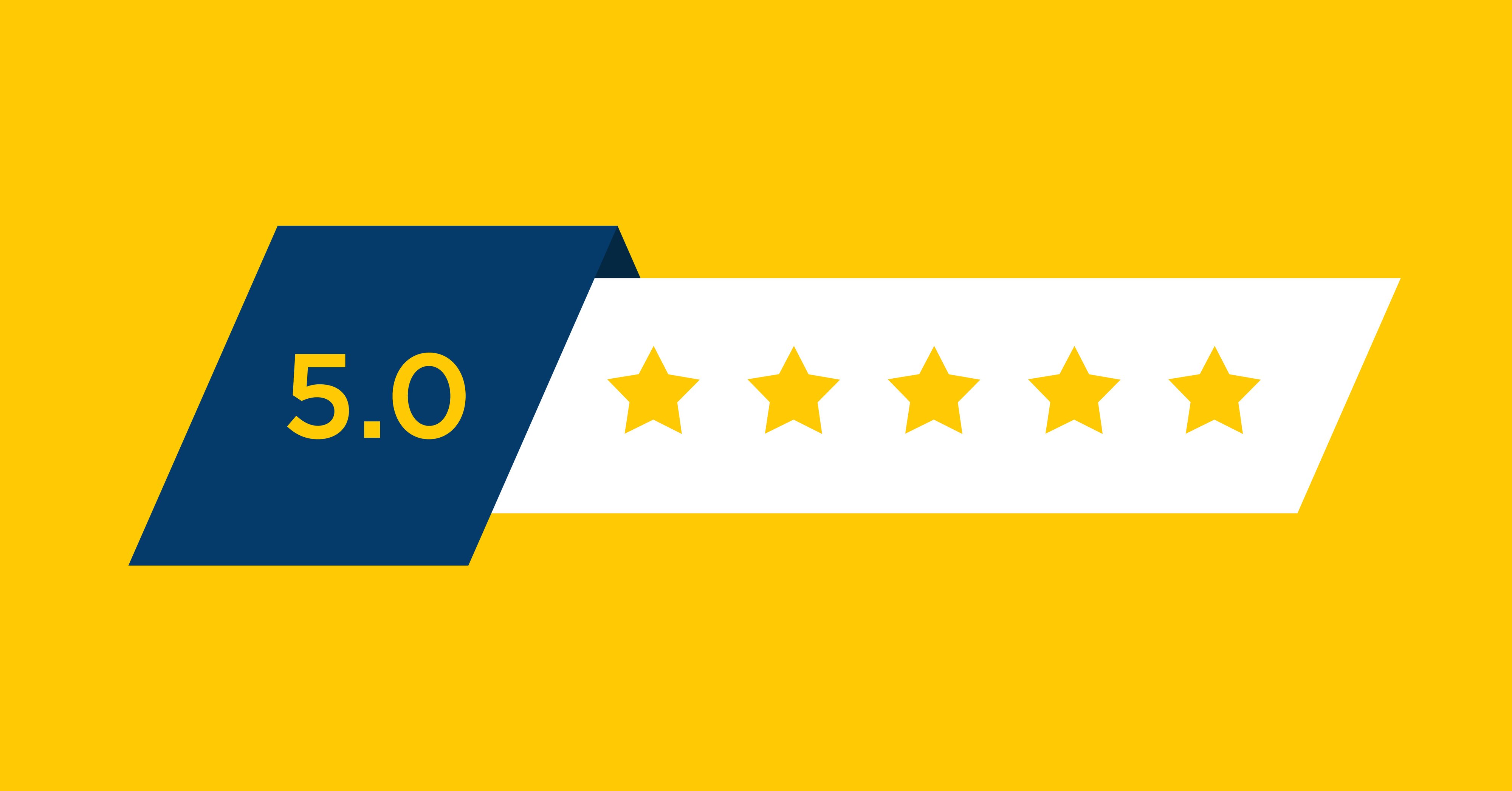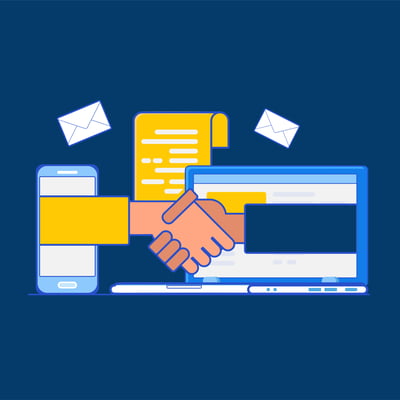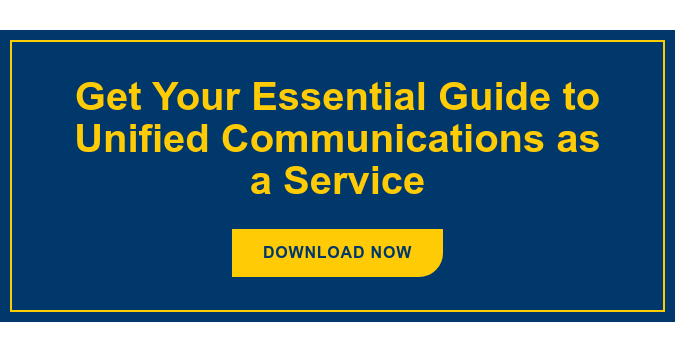If you want your customers to talk about your business to others, treat them well. But if you really, really want to get talked about, treat them badly. Recent statistics indicate that 87% of consumers will share a good customer experience with others, but 95% will rat you out over bad service.
 Unfortunately, all of us have probably experienced some bad service at some point. You call a company’s 1-800 number, and you wait on hold for a long time. When you finally get to talk to someone, they can’t answer your question. You get transferred again, have to repeat yourself, and still may or may not get what you need. And the worst part — you might have to call them again…for the same exact thing.
Unfortunately, all of us have probably experienced some bad service at some point. You call a company’s 1-800 number, and you wait on hold for a long time. When you finally get to talk to someone, they can’t answer your question. You get transferred again, have to repeat yourself, and still may or may not get what you need. And the worst part — you might have to call them again…for the same exact thing.
This is such a common experience that it feels like it’s unavoidable as companies scale up. But there’s actually a decent fix for this one, and it’s called Contact Center as a Service, or CCaaS.
What Is CCaaS?
CCaaS is cloud-based software that provides all of the traditional contact center functions, plus a few more.
Common CCaaS features include:
- Inbound and outbound calling
- The ability to communicate with customers through chat, text, social media, and email
- Support tickets to make sure issues are fully resolved
- Call queueing
- Automatic call routing and AI to reduce hold times and transfers
- Call recording to ensure service quality remains high
- App integrations to empower agents with better relationship management tools and services
- Social media listening to better understand frequent pain points and strengthen the brand
You may also hear another related acronym being thrown about days: CXaaS, or Customer Experience as a Service. CXaaS typically refers to the combination of CCaaS solutions plus customer relationship management software (CRM), plus digital monitoring of your brand and customer feedback.
What’s the Difference Between a Call Center and a Contact Center?
This seems like a question with an obvious answer, but there are a few subtleties that are worth exploring.
Call Center
As the name might suggest, call centers are mostly limited to serving their customers one at a time, through voice calls. To put it another way, a traditional call center is what most of us experience when we call the 1-800 number of a company that’s notorious for having poor customer service. Information gets siloed, and there’s no quick way for a company to understand which customer pain points are driving call volumes.
The result? That message that always says the company is experiencing “higher than normal call volumes,” because nothing ever really gets fixed.
Contact Center
A contact center allows customers to communicate with agents through text, email, and chat. That alone is nice, but contact centers also have better tools that can reduce transfers and hold times for customers. And perhaps the best part? Companies with contact centers get more insight into issues that drive call volumes and frustrate their customers the most.
For a detailed infographic comparing the capabilities of contact centers versus call centers, read this recent blog.
What Are the Benefits of CCaaS?

By now, you can probably easily guess most of the benefits of a contact center: short hold times, one-and-done issue resolution, customers don’t have to repeat themselves or make repeated calls, agents get yelled at less, and customers have more trust in your business.
The software itself, however, has a few additional benefits over an on-premises solution.
1. More Cost Effective
Like any other cloud solution, using CCaaS instead of an on-premises system eliminates the need to buy and continually maintain expensive equipment. And since it can be accessed from anywhere, you can also save quite a bit of money on utilities and office space.
2. Easier Management and Maintenance
With a provider monitoring and managing your system, you’ll reduce the burden on your IT staff. Your data also won’t be stored in any single location, so any single point of failure won’t cause a massive disruption or a catastrophic loss of data.
3. Easily Scalable
With CCaaS, you can add or remove users and features in a few clicks. If your business needs to cut back or is seasonal, you won’t be stuck paying for things you’re not using.
4. Increases Job Satisfaction
A recent survey found that only 19% of contact center employees “strongly agree” that they’re satisfied with their role. Ouch. But other statistics indicate that pivoting from an on-premises solution to CCaaS — which accommodates remote and hybrid work — can go a long way to increasing job satisfaction and reducing turnover.
According to SHRM's 2022 State of the Workplace survey:
- Remote workers report much higher levels of positive feelings toward their companies
- Labor shortages are less of an issue for remote organizations
5. Offers Real-Time Analytics
While contact center capabilities are more robust than a call center, CCaaS solutions offer seamless integrations with other customer relationship management tools. Instead of employees having to copy data from one platform to another for analysis, customer information can be synced automatically.
How Do UCaaS and CCaaS Work Together?
Not to throw more tech acronyms your way, but if you’re looking to break down communication silos throughout your organization, it’s time to talk about Unified Communications as a Service (UCaaS) and how companies are using both to transform the employee and customer experience.
UCaaS helps your employees communicate well internally and with business partners; CCaaS helps your business communicate externally with your customers. And businesses that invest in both get even more benefits.
3 Real World UCaaS + CCaaS Scenarios
I could go on and on, but in my experience, it’s much easier to explain how UCaaS and CCaaS can work together through a few hypothetical scenarios.
- Let’s say that a customer asked a contact center agent a more technical question — one they didn’t have the training or resources to answer properly. With UCaaS and CCaaS, the agent could actually ask an internal specialist in real-time and give the customer a detailed response quickly.
- Imagine that the original salesperson had the ability to respond promptly and personally if a customer ever experienced an issue. Your sales reps could build longer-term relationships with their contacts and, therefore, improve their ability to earn more money the longer they remain with your company.
- How about this one — every time an agent thought a customer might benefit from an additional product or service, if you had UCaaS and CCaaS, they could easily pass those warm leads to your sales team.
Sound good?
These are just a few examples of how UCaaS and CCaaS work together to increase customer satisfaction and drive ROI — not to mention the savings you’re likely to get when you get both of them from the same provider.
Selecting a Great Best CCaaS Solution
If UCaaS, CCaaS, or both are looking like a good solution for your organization, it gets a bit easier from here. Third parties like Gartner have evaluated top providers. Spoiler alert: Webex by Cisco is recognized as being in the “Magic Quadrant” for CCaaS, UCaaS, and Meeting Solutions.
Additionally, bundled deals are our forte here at Marco, and we’re also a Cisco Gold Partner — a special certification that verifies that our technicians can provide best-in-class support for their products.
But I did throw a wrench into the works when I mentioned UCaaS. Fortunately, our communication specialists have put their heads together to develop a comprehensive guide that goes over UCaaS and its benefits in greater detail. Click below to get your free copy!
